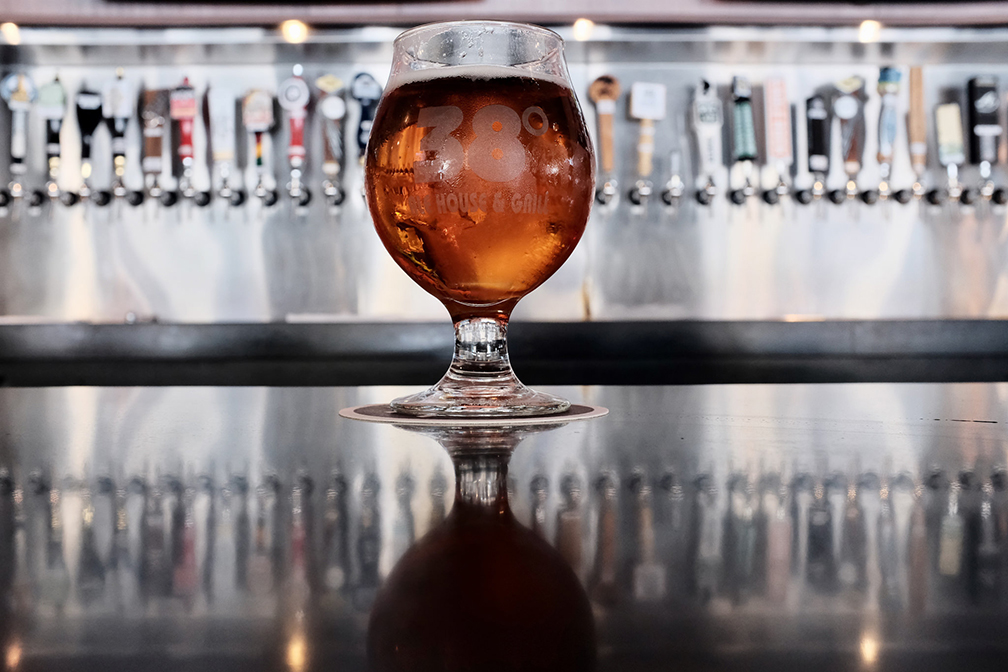Customers not only expect good beer at a taproom. They also want to enjoy a good time.
With so many craft beers to choose from, more breweries are opening taprooms to compete in today’s crowded marketplace. By selling IPAs, stouts or pilsners along with serving food or hosting events, breweries are hoping to reap the rewards of taproom sales. This fall, the UVM Business of Craft Beer’s new Beer School will offer online continuing education beer courses aimed at serving operating breweries including Brewpub/Taproom and Restaurant Planning and Maximizing Taproom Sales and Profits.
The quality of beer served in a taproom should be a top priority, but experts say it’s important to remember that customers also expect excellent food and a memorable experience.
“You’ve got to give people something to talk about,” says Kary Shumway, CFO for Wormtown Brewery in Worcester, Massachusetts “Give them something new and give them something different. It’s got to be about the experience.”
Advantages and Challenges
Taprooms offer many upsides. Direct-to-consumer sales with a taproom-focused business model means a brewery gets the benefit of higher margins on retail sales and can generate additional sales from food, merchandise, gift cards, and events. Serving beer on-site offers not only a financial advantage for breweries but also creates a strong connection with customers.
But it’s also complex operation that involves more than just making good beer. Brewery owners must set-up taproom financial reporting systems and understand how to maximize taproom sales and track key financial numbers.
“As the beer industry has grown, shelf space has become very competitive, and on-premise sales have become really important for the industry,” says David Nyhan, who helped Vermont-based Stone Corral Brewery become a full-service restaurant. “The biggest thing you need to work on for a taproom is consistency. When you start losing consistency in your beer, you lose clientele. Focus on keeping things simple.”
There are also many things to consider when opening a taproom. How do you hire and build a team? Does the food menu reflect your brand and community needs? Is menu development and pricing designed to avoid financial losses? How can you grow or scale for the long run?
Financial planning is key, Shumway says.
“Understand how money comes into and goes out of the business. Understand where cash gets sucked up and plan for it. Learn the basics of financing—working capital loans, term loans—understand bank covenants and how to stay in compliance,” Shumway says. “Beer is profitable, food is complicated. It can work, and work well, but it introduces new operational and financial risks.”
How to Maximize Taproom Profits
Aside from good beer and tasty food, creating a welcoming and authentic atmosphere is also important for a taproom’s success. Featuring local artists, live music or community events such as trivia night or game night can help make a taproom standout. Collaborating with local beer influencers and hosting beer release parties can attract customers and boost a brewery’s bottom line.
As an example, Shumway said Wormtown Brewery recently announced it would be the official Hometown Brewery of the Worcester Red Sox. The brewery hosted an event in early March that featured food, live music and a limited release of “Welcome to Worcester” beer with a small batch aged on locally-made wooden bats.
Shumway offers the following tips:
- Sell to your best customers again: point-of-sale systems can capture email or cell phone numbers. Connect with customers directly and stay in touch with fun things happening at the brewery, such as events and new releases.
- Teach your staff to upsell by offering the customer additional items, such as a growler or merchandise.
- Events are often the biggest sales days at taprooms, so make your event special and unique.
- Online sales: offer e-commerce on your website for event tickets, merchandise and beer clubs.
- Collaborate with local businesses or other breweries.
Key Financial Metrics for Breweries
The number of breweries operating in the United States surpassed 7,000 in 2018—a new high mark. About 1,000 more new breweries are expected to open this year, according to the Brewers Association. Still, craft beer sales will grow but at a slower pace.
As the market shifts, it’s more important than ever for breweries to analyze their business performance.
Shumway, who recently wrote an article on the subject for Brewbound.com, says that key metrics such as revenue per barrel, margin per barrel and profit per barrel are also helpful to summarize financial information and make it easy to compare results with other breweries.
Here are some examples:
Revenue Per Barrel. To calculate this key metric, divide total revenue (sales) by the total number of BBLs (dollars per barrel) sold. For example, $1,000,000 revenue divided by 1,000 BBLs sold = Revenue of $1,000/BBL.
Margin Per Barrel. Brewery margin is the difference between the sales price and cost of the beer. To calculate this metric, divide the margin dollars by total BBLs sold. For example, $500,000 margin divided by 1,000 BBLs sold = Margin of $500/BBL.
Operating Expenses Per Barrel. Operating expenses (OPEX) are all the costs that don’t go into the cost of your beer. They include things like administration, human resources, IT, and non-production management wages. To calculate this metric, divide total operating expenses by total BBLs sold. For example, $400,000 OPEX divided by 1,000 BBLs sold = OPEX of $400/BBL.
EBITDA Per Barrel. EBITDA is an acronym that stands for earnings before interest, taxes, depreciation, and amortization. To calculate this metric, divide EBITDA by total BBLs sold. For example, $100,000 EBITDA divided by 1,000 BBLs sold = EBITDA of $100/BBL.
Profit is good, but EBITDA is better, Shumway says. Cash will ensure a sustainable taproom-only brewery.
“Cash is king,” Shumway says. “And cash flow is the single most important measure of financial success for a taproom.”
Taproom Brewery Classes at UVM
Starting this fall, UVM’s new Beer School will offer online continuing education beer courses aimed at serving operating breweries. David Nyhan will teach Brewpub/Taproom and Restaurant Planning, and Kary Shumway will teach Maximizing Taproom Sales and Profits.
Listen to Our Podcast About Brewery Taprooms
Listen to Kary Shumway and David Nhyan on UVM’s Business of Craft Beer podcast, Brewery Taprooms: Risks and Rewards




